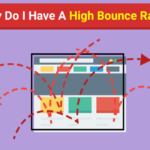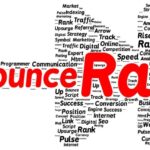Why the Fed’s End Goal Is More Crucial Than the Speed of Rate Cuts
Key Takeaways
- The market didn’t care much about the Fed’s 50-basis-point cut because the destination (the neutral rate) matters more than the pace.
- The neutral rate is the interest rate level that supports full employment and low inflation, but it’s unobservable, making it tricky for the Fed to hit it perfectly.
- The Fed’s current estimate for the neutral rate is 2.9%, but this number has shifted over time due to various economic factors.
- A 50-basis-point cut was possible because inflation is under control, giving the Fed room to act.
- Investors should focus on the long-term trajectory of interest rates rather than the size of individual cuts.
The Federal Reserve’s recent rate cut stirred a lot of buzz, but the market’s reaction was surprisingly muted. Headlines blared, analysts hit the airwaves, and social media platforms were flooded with commentary. Yet, despite all the excitement, the market responded with a collective shrug. Equities, bonds, and currencies barely reacted to the 50-basis-point cut, leaving many to wonder: why the indifference? The answer lies in understanding that for the Fed, the destination matters much more than the pace.
The Market’s Indifference
The market’s lackluster response wasn’t just amusing; it was entirely fitting. The debate over whether the Fed would go with a 25 or 50-basis-point cut dominated financial media, but in the end, the distinction didn’t really matter. The Fed had already signaled its pivot toward cutting rates, so what mattered most wasn’t the size of this particular cut—it was the bigger picture. Where are interest rates headed over the long term? And how fast does the Fed intend to get there?
Why the Size of the Cut Doesn’t Matter (Much)
A quarter-point difference in the short-term interest rate might seem like a big deal in the moment, but in the grand scheme of things, it’s not. The economy is too vast and complex for a small tweak like that to have a significant impact by itself. The real significance of the size of the cut lies in what it signals about the Fed’s broader strategy—its overall journey. Where does the Fed believe interest rates should settle over the long term? And how fast does it want to reach that target?
This brings us to a key concept: the neutral rate, often referred to by economists as r*.
What Is the Neutral Rate?
The neutral rate is the level of interest rates that promotes full employment and keeps inflation low. It’s not something we can observe directly; rather, we only know we’ve hit it based on its effects. As Fed Chair Jerome Powell likes to say, “We know it only by its works,” paraphrasing from the Gospel of Matthew.
So how do we know when we’ve fallen below or risen above the neutral rate? If inflation starts to rise, it’s a sign that interest rates are too low. If risk assets like stocks start to plummet and unemployment rises, it suggests rates are too high. The challenge is that central bankers can’t just stand still and wait for the perfect rate to reveal itself. The economy is constantly evolving, and policy takes time to affect the real world. This forces the Fed to make an educated guess and adjust as needed.
The Fed’s Current Estimate of the Neutral Rate
The Fed’s current estimate for the neutral rate is around 2.9%, based on its latest summary of economic projections. This is a slight increase from its previous estimate of 2.8% in June, but the shift is significant. Over the past few years, the Fed has been gradually adjusting its view of the neutral rate in response to several factors: fiscal and monetary policy, an aging population, deglobalization, rising productivity, and other forces.

While this shift may seem subtle, it has big implications. If the Fed is right about the neutral rate, it doesn’t have too far to go before it reaches its destination. At a pace of 50-basis-point cuts per meeting, the Fed could hit its target by March of next year. However, the central bank plans to move at a slower pace—if economic conditions allow.
Why a 50-Basis-Point Cut?
If the Fed thinks the neutral rate is close, why opt for a 50-basis-point cut now? The reasoning is simple: because they can. The Fed’s press release and Powell’s press conference made it clear that inflation is under control, allowing them the flexibility to make a more aggressive cut. In essence, they’re preemptively ensuring that inflation stays low, while signaling confidence in the strength of the labor market.
The Risk of a Fed Misstep
For investors, the real concern is whether the Fed might misjudge the neutral rate. If they push rates too low and inflation picks up again, they’ll have no choice but to raise rates. In that scenario, equities would likely outperform Treasuries. On the flip side, if the Fed doesn’t cut enough and the economy slips into a recession, the reverse could happen—Treasuries would be the safer bet.
At this stage in the cycle, active investors have no choice but to form their own opinions on where the neutral rate lies. This is far more critical than whether the next cut is 25 or 50 basis points. But trying to predict the neutral rate is like attending a university seminar where the syllabus is a mystery, the exam date is unknown, and your grade affects your salary.
Why the Stakes Are Higher Now
What makes this moment particularly significant is that asset prices—especially stocks and corporate bonds—are stretched. Big U.S. stocks are trading at high earnings multiples, and credit spreads are as tight as they’ve ever been. In other words, everything is priced for stability.
However, if the Fed has to change course quickly because it overshoots or undershoots the neutral rate, that stability will be thrown into chaos. Whether investors realize it or not, they’re making a bet on r*—the neutral rate—every time they make a move in the market.
FAQs
The neutral rate (r*) is the interest rate level that supports full employment and keeps inflation low. It’s crucial because it serves as the target for the Fed’s interest rate policies. However, it’s an unobservable number, meaning the Fed has to estimate its value and adjust as necessary.
The market’s muted reaction was likely due to the fact that the Fed had already signaled its intention to cut rates. The actual size of the cut—whether 25 or 50 basis points—was less important than the overall direction of policy.
The Fed opted for a 50-basis-point cut because inflation is under control, and the labor market is stable. The larger cut allows the Fed to act preemptively to ensure inflation remains low while signaling confidence in the economy.
If the Fed sets rates too low, inflation could rise, forcing the Fed to raise rates again. If rates are too high, the economy could slip into a recession. Investors need to consider these risks when making investment decisions.
With stocks and corporate bonds trading at high valuations, the Fed’s actions have significant implications. A rapid change in policy due to misjudging the neutral rate could destabilize these markets, leading to sharp corrections.








